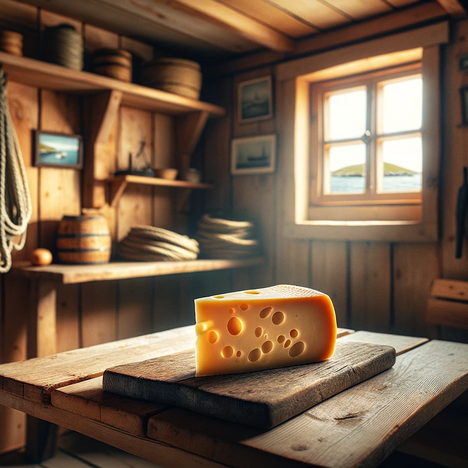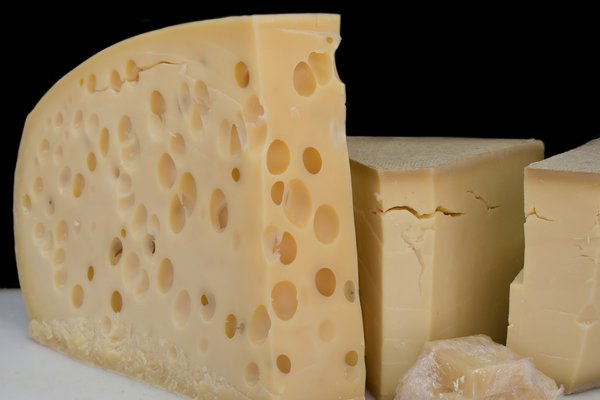Jarlsberg

What is Jarlsberg?
Jarlsberg is a semi-soft cheese that originated in Norway and is known for its mild, nutty flavor. Its texture is elastic and it is famous for the large holes that appear during the ripening process. Jarlsberg is often used as a semi-hard cheese, but also has many uses in hot dishes. It contains a range of nutrients, including calcium, protein and vitamins, as well as fat and salt.
Jarlsberg and dogs: a perfect match?
Advantages
- Protein source: Jarlsberg can provide an additional source of protein for dogs. Protein is essential for building and repairing body tissue.
- Calcium for bones: The cheese provides calcium, which helps to strengthen bones and teeth.
- Flavor variety: A small piece of Jarlsberg can serve as a tasty reward and add variety to your dog's diet.
Disadvantages and risks
- High fat content: Jarlsberg contains a lot of fat, which can lead to obesity if consumed in excess and, in combination with a high-fat diet, to pancreatitis.
- Lactose intolerance: Many dogs are lactose intolerant. Although cheese generally contains less lactose than milk, eating Jarlsberg can cause gastrointestinal discomfort in some dogs.
- Salt content: The salt content in cheese can be problematic for dogs, especially those with heart disease or high blood pressure.
- Allergies or intolerances: Some dogs may be sensitive to dairy products or have specific allergies that can be triggered by cheeses such as Jarlsberg.
Jarlsberg, in very small amounts and as an occasional treat, can be a tasty supplement for dogs. However, the potential benefits, such as extra protein and calcium, should be carefully weighed against the risks, particularly the high fat and salt content and the possibility of lactose intolerance. It is important to pay attention to your dog's individual reaction and remove cheese from their diet if they show signs of indigestion or other intolerances. As with all treats, the rule is: less is more. A balanced diet that is specifically tailored to your dog's needs remains the key to his health and well-being.
If you notice any signs of hypersensitivity or poisoning in your dog, you should see your vet immediately. We are not a substitute for a vet, but we try to be as accurate as possible. Every dog reacts differently and we recommend you get a second opinion or consult your vet if in doubt.
Stay healthy and take good care of your four-legged friend!😊
Similar to Jarlsberg
Emmental consists mainly of cow's milk, which is pasteurized and mixed with rennet and lactic acid bacteria. The cheese then matures for several months in cool cellars, where it develops its typical...
Gruyère is a hard cheese made from raw cow's milk. It comes from the canton of Fribourg in Switzerland and is named after the town of Gruyères. It has had a protected designation of origin (PDO)...
Cheese can be a tasty treat for dogs that also has health benefits. Edam cheese contains a lot of protein, which is important for muscle building and cell regeneration. It also provides calcium,...
Gouda is a semi-soft semi-hard cheese from the Netherlands. It is made from pasteurized or raw cow's milk with the addition of rennet and lactic acid bacteria. The cheese mass is pressed into molds...



